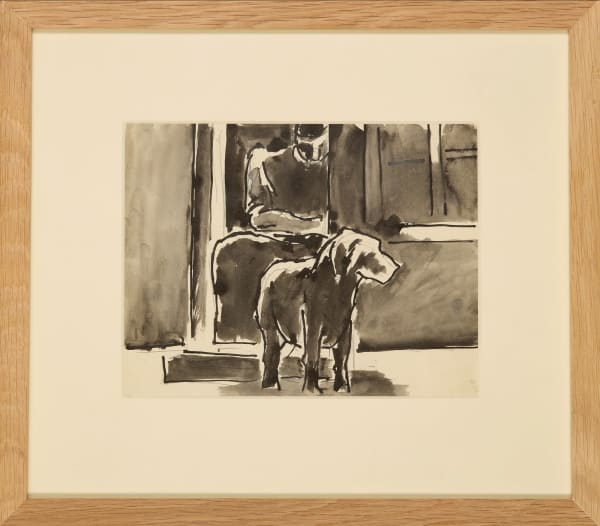Original Artwork by Josef Herman
-
Josef Herman (1911–2000) was a Polish-born British painter best known for his powerful portrayals of working people. After fleeing Poland in 1938, he settled in the UK and later spent over a decade in Ystradgynlais, a mining village in South Wales. That period shaped some of his most enduring work—scenes of miners and labourers that reflect both strength and dignity.
His style is bold and expressive, often using simplified forms and deep, earthy colours to emphasise mood and presence over detail. Herman’s focus was always on the humanity of his subjects, showing ordinary people with a quiet, steady sense of respect.
He was awarded an OBE in 1981 and became a Royal Academician in 1990. His work remains an important record of working-class life, seen through the eyes of someone who truly valued it.
-
Works
-
BiographyJosef Herman, was a highly regarded Polish-British painter who influenced contemporary art, particularly in the United Kingdom. He was part of a generation of central and eastern European Jewish refugee artists who emigrated to escape Nazi persecution. He saw himself as part of a tradition of European figurative artists who painted working people, a tradition that included Courbet, Millet and Van Gogh, Kathe Kollwitz and the Flemish Expressionist Constant Permeke. For eleven years he lived in Ystradgynlais, a mining community in South Wales.
-
FAQs
Josef Herman (1911–2000) was a Polish-born British artist known for his powerful depictions of working people, especially miners and labourers. After fleeing Poland before World War II, he settled in Britain, eventually making his home in the Welsh mining town of Ystradgynlais. Herman’s paintings focus on the dignity, strength, and everyday lives of workers, often using bold forms and rich, earthy colours. His work combines social consciousness with a deep sense of humanity, earning him a lasting reputation as an artist who captured the spirit of the working class with honesty and respect.
Josef Herman’s work is characterised by bold, simplified forms, strong outlines, and a rich, earthy palette. His style blends elements of realism and expressionism, focusing more on emotional impact than fine detail. Figures are often solid and monumental, standing against simple, textured backgrounds. Herman’s paintings celebrate the dignity and resilience of workers, with compositions that emphasise strength, community, and endurance. His art is direct and powerful, evoking a sense of both personal identity and shared human experience. Herman’s visual language remains immediately recognisable and deeply moving.
Josef Herman was most inspired by the lives of working people, particularly miners, farmers, and fishermen. After settling in Wales, he became deeply connected to the mining community of Ystradgynlais, drawing inspiration from their hard work, camaraderie, and resilience. Herman’s broader subjects included scenes of labour and rural life, always focusing on themes of strength, endurance, and the human connection to the land. Rather than romanticising, Herman aimed to show the real dignity of manual work, creating paintings that honour the lives of those often overlooked in traditional art.
Josef Herman studied art in Warsaw, Poland, before fleeing to Belgium and then France as World War II approached. After arriving in Britain in 1940, he became part of London’s vibrant émigré and refugee art community. Though much of his education was self-directed, Herman’s experiences across Europe and Britain, combined with a deep engagement with social issues, strongly shaped his artistic development. His exposure to different cultures and working-class communities gave him a wide range of influences, which he distilled into a highly personal and distinctive style.
Josef Herman’s legacy is celebrated for his honest and moving portrayals of working people. He is recognised as an important voice in 20th-century British art, particularly for his contribution to social realism. His paintings continue to resonate for their strong emotional presence and their respect for the dignity of labour. Herman’s work is included in major public collections, including Tate Britain and the National Museum Wales. Today, he is remembered not only as an artist of powerful vision but also as someone who gave visibility and value to lives often left unrecorded in art.
Josef Herman’s work has been exhibited widely across Britain and internationally. Major exhibitions of his paintings have been held at institutions such as Tate Britain, the Royal Academy of Arts, and the National Museum Wales. His strong connection to Wales has been celebrated through special exhibitions highlighting his depictions of mining life and rural communities. Herman’s paintings have also featured in group shows focused on social realism and émigré artists. His work remains a significant part of many public and private collections, continuing to attract audiences moved by his powerful, human-centred art.



